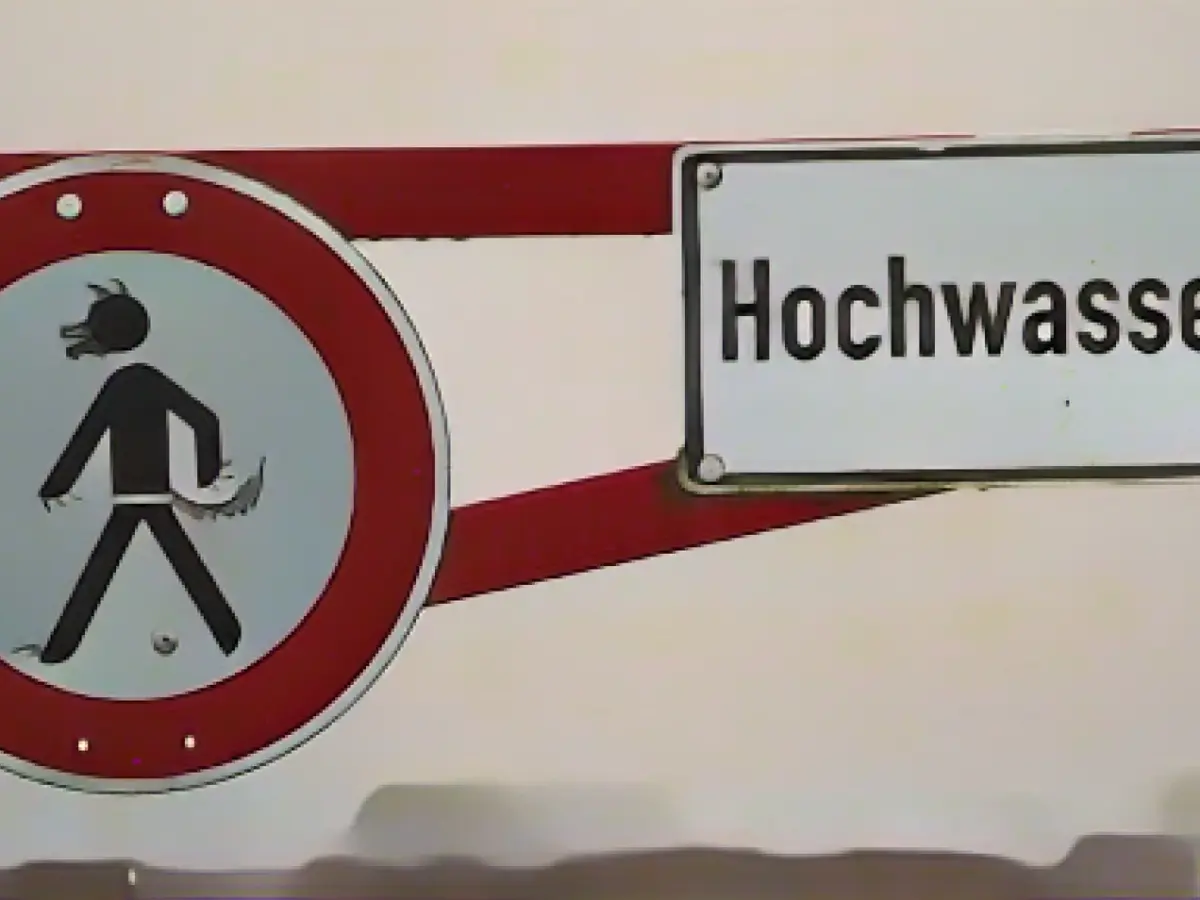Flood - "The trend is downwards": water levels on rivers are falling
The flood situation in Rhineland-Palatinate is continuing to ease. "The trend is downwards," said a spokesperson for the flood reporting service in Mainz on Tuesday. There could possibly be an increase again in the new year. "But that's still a long way off," he said. The German Weather Service was not expecting large amounts of rain over the next few days either.
According to the flood forecasting center, the highest levels on the Upper Rhine were already reached on Tuesday, while the highest levels on the Middle Rhine were expected during the course of Tuesday, after which the water should also recede here.
A maximum level of 5.82 meters was recorded at the Mainz gauge, which was slightly above a two-year flood. On the southern Upper Rhine, even the highest levels remained below those of a two-year flood. At the Maxau gauge, for example, the reported level was expected to fall below seven meters on Tuesday.
On the Middle Rhine, the Flood Forecasting Center expected a minimal rise of a few centimetres at most on Tuesday, after which the water was expected to fall at least until the weekend. At the Kaub gauge, for example, the highest level to date was 5.86 meters.
Despite the falling water levels, some car ferries on the Rhine were still out of service, such as the one from Ingelheim to Oestrich-Winkel in Hesse, the one between Remagen-Kripp and Linz in the north of Rhineland-Palatinate or the one near the famous Loreley from St. Goar to St. Goarshausen.
On the Rhineland-Palatinate section of the Lahn, the highest water levels had already been reached on the morning of Christmas Day at 5.28 meters at the Diez gauge and 6.33 meters at the Kalkofen gauge. The water level there began to fall on Monday afternoon and is forecast to continue to do so until at least Friday.
The picture was similar on the Sieg in the far north: Here, the highest levels were reached on the night of Boxing Day. According to the flood forecasting center of the Rhineland-Palatinate State Office for the Environment, the water levels would now also fall here and on the smaller bodies of water in the surrounding area.
According to the flood report for Rhineland-Palatinate from Tuesday, there is currently no longer an acute risk of flooding on the remaining bodies of water in Rhineland-Palatinate. In Saarland, water levels were forecast to fall significantly on Boxing Day.
Flood report from 26.12. Flood report for Saarland
Read also:
- A clan member is punished here
- Traffic lawyer warns: Don't talk to the police!
- Will he be convicted as Jutta's murderer after 37 years?
- He also wanted to kill his cousin
The water level on the Upper Rhine, as reported by the flood forecasting center, had already peaked on Tuesday. The flood situation in Saarland is expected to improve significantly on Boxing Day, according to the flood report. Despite the decrease in water levels on the Middle Rhine, some car ferries, such as the one between Remagen-Kripp and Linz, are still not operational. The German Weather Service in Rhineland-Palatinate does not anticipate heavy rainfall in the near future, which should aid in the decline of flood waters. The DWD (Deutscher Wetterdienst) is monitoring the situation closely on various rivers, including the Middle Rhine and the Rhine itself.
Source: www.stern.de








